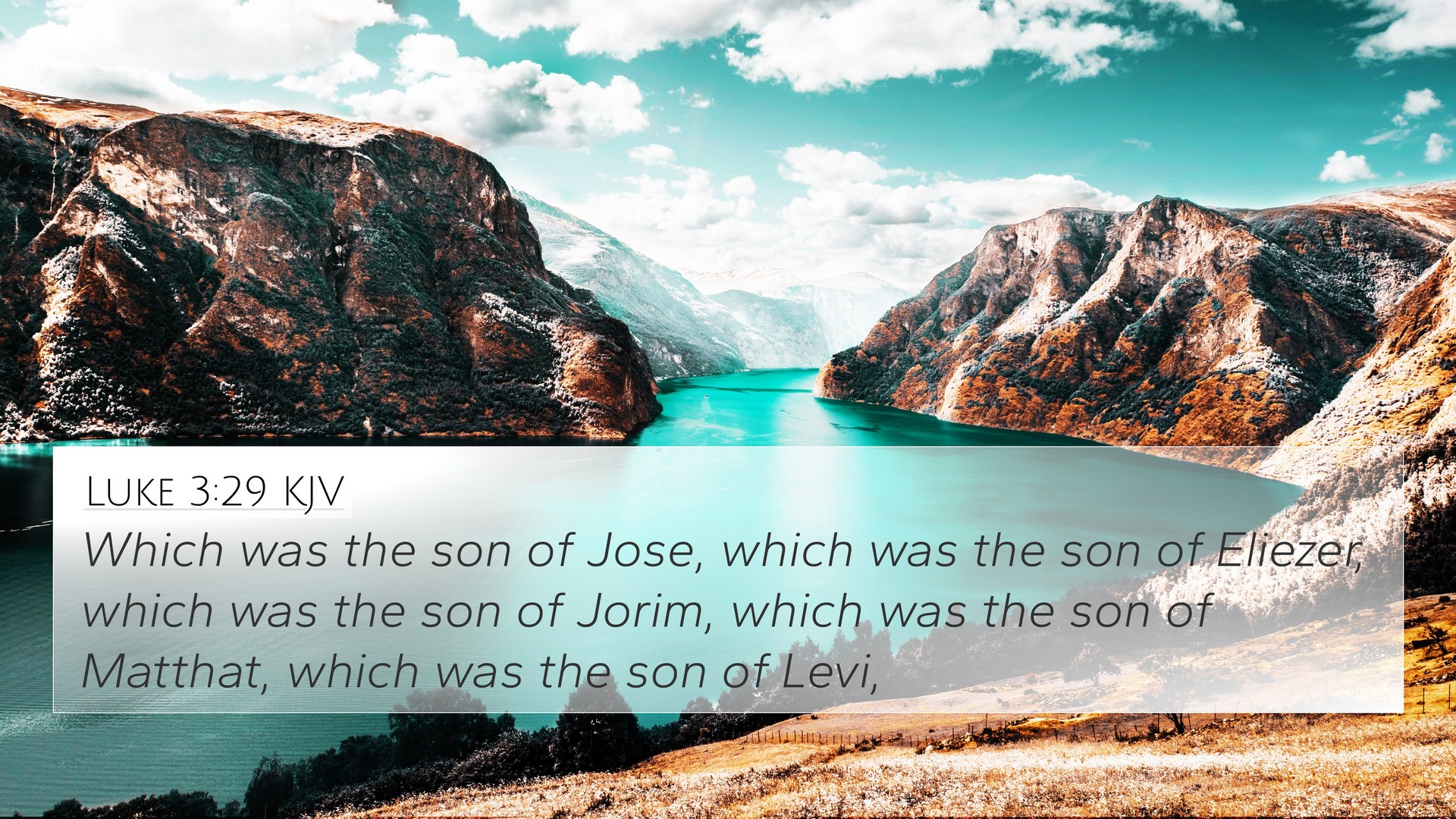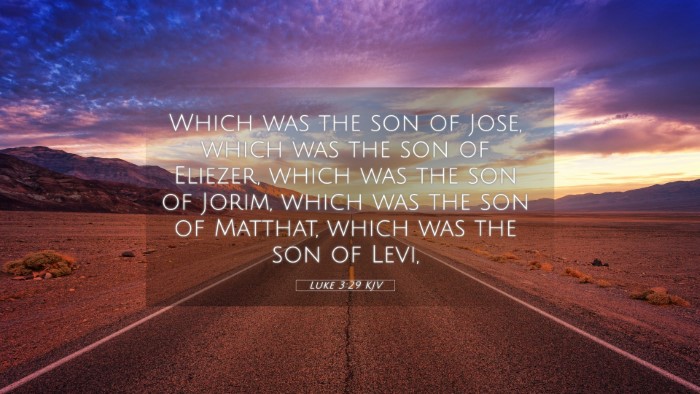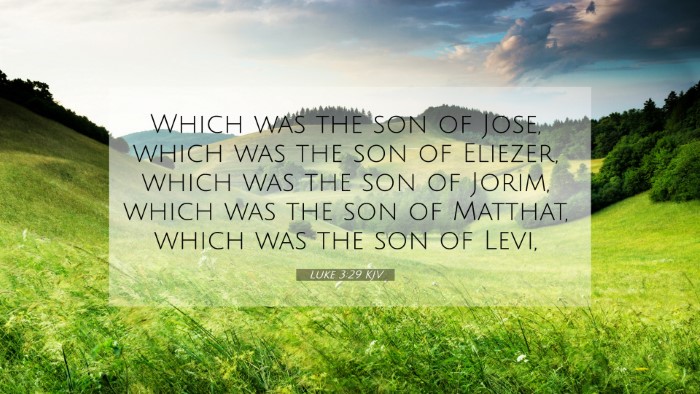Understanding Luke 3:29
Luke 3:29 states: "Which was the son of Jacob, which was the son of Isaac, which was the son of Abraham, which was the son of Terah, which was the son of Nahor." This verse is part of the genealogy of Jesus, emphasizing His human lineage and fulfilling the Messianic prophecies.
Significance of Genealogies in the Bible
Genealogies play a vital role in connecting the Old Testament to the New Testament, providing evidence of Jesus’ rightful place in Jewish tradition. Here’s a summary of insights from notable public domain commentaries:
- Matthew Henry:
Henry emphasizes the importance of genealogies, seeing them as affirming the divine plan for salvation traditionally rooted in Abraham's covenant. He notes that Luke's genealogy demonstrates Jesus' role as the fulfillment of God's promise to Abraham.
- Albert Barnes:
Barnes highlights the distinctiveness of Luke's genealogy compared to Matthew’s. He identifies its purpose in asserting Jesus' place not merely as a Jew but as a figure of universal significance. It traces Jesus’ lineage back to Adam, emphasizing humanity's connection through Him.
- Adam Clarke:
Clarke notes the historical accuracy and the theological implications of these genealogies. He mentions the critical nature of these records in establishing Jesus as the legitimate heir of God’s promises to both the Jews and Gentiles, reinforcing the unity of the Scriptures.
Cross-References for Luke 3:29
This verse connects to several significant Scripture passages which highlight the continuity of Jesus' lineage and many theological themes in the Bible. Here are cross-references that demonstrate these connections:
- Genesis 12:1-3: God's covenant with Abraham, promising that through him all the nations of the earth would be blessed.
- Matthew 1:2-17: The genealogy provided by Matthew, which aligns with Luke's account, reinforcing Jesus' claim to David's throne.
- Romans 1:3: Paul mentions Jesus as a descendant of David according to the flesh, linking back to the genealogies established in the Gospels.
- John 1:14: "The Word became flesh," underscoring the significance of Jesus' human lineage, making Luke's genealogy pertinent to the understanding of the Incarnation.
- Galatians 3:29: States that all who belong to Christ are Abraham's offspring, illustrating the spiritual lineage established through faith in Christ.
- Hebrews 7:14: References Jesus’ tribe, indicating the Levitical priesthood and the fulfillment of Old Testament priesthood through Jesus.
- Revelation 5:5: Describes Jesus as the Lion of the tribe of Judah, affirming His rightful heritage and authority in fulfillment of prophecies related to Judah.
Thematic Connections in the Bible
The genealogy presented in Luke 3:29 contributes to a broader theological narrative. It addresses the following themes:
- The Faithfulness of God: The consistent theme of God's faithfulness throughout generations emphasized through genealogical records.
- Unity of Scripture: Interconnecting different parts of the Bible by harmonizing Old Testament promises with New Testament fulfillment through Christ.
- Universal Salvation: The genealogy establishes Jesus as a figure for all humanity, representing a connection to both Jew and Gentile.
Tools for Understanding Bible Cross-References
To engage deeply with scriptural cross-references, various tools and methods can enhance your Bible study experience:
- Bible Concordance: A useful tool for locating verses and understanding words in the original languages.
- Bible Cross-Reference Guide: This helps identify connections between verses and themes effectively.
- Cross-Reference Bible Study: Systematic study methods focusing on interrelated verses can uncover deeper insights.
- Bible Reference Resources: Utilize reputable commentaries and study guides to broaden understanding.
- Bible Chain References: A study technique that connects passages through thematic or narrative similarities.
Conclusion
Luke 3:29 serves not only as a record of Jesus' ancestry but also as a bridge connecting the Old and New Testaments. Its rich lineage supports theological themes of covenant, faithfulness, and universal salvation, encouraging readers to explore the resultant connections between Bible verses. By utilizing effective cross-referencing practices, one can uncover the profound truths interwoven throughout Scripture.
Understanding the connections and contextual meanings of verses can significantly enrich one's reading of the Bible. As we reflect on Luke 3:29 and its cross-references, we deepen our grasp of the narrative of salvation history, profoundly woven through God's Word.


